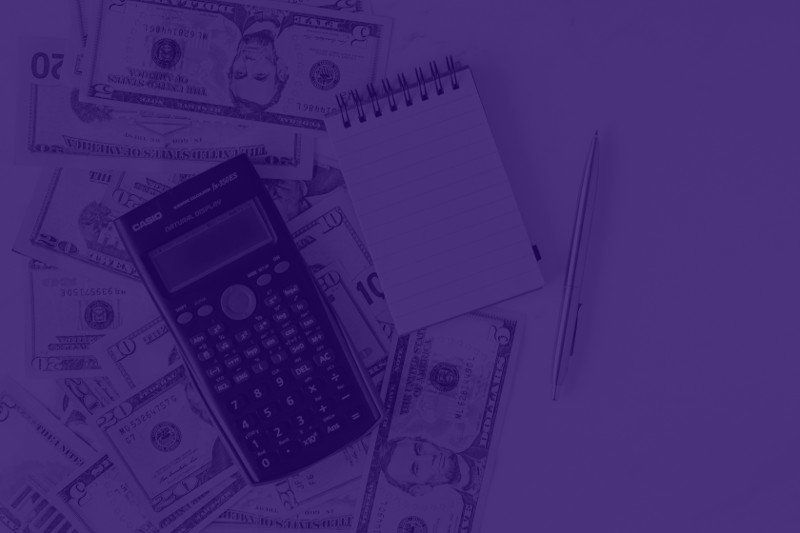BLOG
Why is it important to cut costs the right way?
Peter Disney • July 31, 2019
“My dear young friend,’ said Mr. Micawber, ‘I am older than you; a man of some experience in life, and – and of some experience, in short, in difficulties, generally speaking. At present, and until something turns up (which I am, I may say, hourly expecting), I have nothing to bestow but advice. Still my advice is so far worth taking, that – in short, that I have never taken it myself, and am the’ – here Mr. Micawber, who had been beaming and smiling, all over his head and face, up to the present moment, checked himself and frowned – ‘the miserable wretch you behold.”
“I say,’ returned Mr. Micawber, quite forgetting himself, and smiling again, ‘the miserable wretch you behold. My advice is, never do tomorrow what you can do today. Procrastination is the thief of time. Collar him!”
This wonderful excerpt from David Copperfield by Charles Dickens summarises the biggest problem when cost cutting. People will talk about doing it but for very important reasons never actually get around to it. There is always a good reason why they put it off. A new sales push, problems to solve, people to meet… just no time. But if you are going to succeed in a serious cost cutting exercise you must take the time to do it properly and thoroughly.
Ok so you have decided to get started but where do you start? The first thing you must do is to identify what your real costs are and exactly when they occur. How do you do this accurately? You could analyse your bank statements but these can be more confusing than helpful. Your expenditure leaves your account over a number of different time periods such as weekly, monthly or even annually. When are these expenses supposed to leave your account and when do they actually leave your account because this can be very different? Looking at your bank account in isolation will not give you a full picture of your costs.
So why not look at the accounts prepared by your accountant? Surely these must be an accurate reflection of what is going on? Well not necessarily. The profit and loss account is likely to cover a twelve-month period and therefore seasonal trends are hidden. Income and expenditure may be higher or lower at different times of the year and you need to know exactly when these occur. Your profit and loss account statement also generally only includes tax-deductible expenses but there may be other costs you are incurring which are not being shown. Consider the hire purchase or loan costs on that car or piece of equipment you need. Only the interest is shown in the profit and loss account. The capital repayment is to be found reducing the liability on the balance sheet.
There may be other items of expenditure, which appear on the balance sheet instead of within the profit and loss account. Fixed asset additions appear on the balance sheet and only depreciation appears in the profit and loss account. The depreciation seldom reflects the actual costs as the depreciation rates can vary from 10% to 33% depending upon the asset type. Don’t forget some annual costs could occur both at the beginning of a year and at the end, so could be counted twice or not at all.
So as you can see, identifying what your real costs are is not that simple, and you need to spend time right now in preparing a detailed cash flow statement on the basis of moving forward without cutting costs, to give you the likely picture if you do nothing differently. The purpose of this cash flow statement is to increase the pressure on you to cut costs so although when preparing this cash flow analysis you want to be as accurate as possible, if you have to make an estimate make sure it overestimates the likely cost. You need to see the worse possible scenario if you continue to spend at the current level. This will increase the “misery” and make you commit to cutting costs in order to survive.
“My other piece of advice, Copperfield,’ said Mr. Micawber, ‘you know. Annual income twenty pounds, annual expenditure nineteen (pounds), nineteen (shillings) and six (pence), result happiness. Annual income twenty pounds, annual expenditure twenty pounds ought and six, result misery.”
Ok so lets assume you have prepared your cash flow analysis for the coming year. Notice I have not called it a cash flow forecast because you are going to make fundamental changes to your costs before you convert it from an analysis to a forecast. Also a forecast includes turnover whereas you are not interested in turnover at all at this stage. It is only about costs and expenses and nothing else.
All of the high street banks can supply cash flow forecasting material so use it. It is a simple format and there is no need for me to repeat it here. The only thing I would remind you is that you must do it in real detail and not in summary form which some systems encourage. Do not spread payments over twelve months in the forecast if you pay them four times per annum. Do not use one heading for light and heat if you have both gas and electricity costs. Use two. You need lots and lots of detail at this stage.
The next step is to decide which group of expenses to attack first. Should you choose direct costs (costs of sale) or indirect costs (overheads) to cut first? You are likely to have limited time and resources so you will want to achieve the greatest improvements in your profitability in the shortest time scales. Rather than using a scattergun approach and start slashing costs wherever and however you can, you should look for those costs that will have the greatest effect on profitability and work downwards from there to the smaller ones.
We have developed a whole bunch of tools and resources to help our clients cut their costs without being detrimental to the future success of their businesses.

In today's fast-paced, ever-changing world, it can be difficult to know who to trust when selecting a supplier. Social media has given rise to a world of noise, where anyone can post anything, and it can be challenging to know what is true and what is not. As a result, credibility has become more critical than ever when selecting any supplier. In this article, we discuss the importance of credibility, the challenges posed by social media noise, and how to identify credible suppliers. What does credibility actually mean? It encompasses sincerity, integrity, authenticity and reliability but fundamentally it is based upon trustworthiness and expertise. It is a combination of both emotion and logic. Credibility is a critical factor when selecting a supplier because it determines whether you can rely on them to deliver what they promise. Making the wrong choice can lead to delays, quality issues, and inevitably financial losses. For example, selecting a supplier based solely on their social media presence can be risky because social media noise can make it difficult to know what is genuine and what is not. In today's world, anyone can post anything on social media, and it can be challenging to separate the truth from the noise. As a result, businesses need to be cautious when using just social media to select suppliers. There was a recent news story about an accountant who had hundreds of 5 star reviews based upon getting massive tax refunds for their clients. It transpired that the refunds were fictitious and HMRC subsequently demanded the refunds back together with interest and penalties leaving those taxpayers with massive debts and long repayment terms. The accountant denied any responsibility and ignored any communications and requests for help. One way to ensure credibility is to look for reliable third-party evidence. For example, has the supplier won any industry awards or hold recognized professional qualifications or perhaps a referral from another professional you already know and trust? Independent endorsements by the supplier’s peers provide a level of reassurance not provided by online reviews. Formal qualifications not only provide evidence of expertise but also ensure adherence to standards of behaviour. The accountant mentioned above was not a chartered accountant and therefore not subject to the rigorous oversight of a professional body. Another way to ensure credibility is to research the supplier's track record including their length of experience. Whilst new suppliers may have recent technical skills learnt from college or university, they will lack the practical experience that comes from working with many clients over many years. For example, a more experienced accountant is likely to have seen a wider range of financial issues and developed a deeper understanding of the unique challenges businesses face especially in regard to surviving recessions. So, you ask how long a supplier has been in business, and what is their experience? This information can be found through online searches, industry publications, or by speaking with other businesses in your industry. Don’t forget to consider the supplier's financial stability. A supplier that is financially stable is more likely to have the resources to deliver on their promises. Consider their financial statements, credit reports, and any other relevant financial information to ensure they are financially sound. We often see advertisements claiming to be able to achieve amazing results yet when you check their own accounts at Companies House they are often insolvent. If they cannot get their own house in order how can they achieve those results for you. It is also important to evaluate the supplier's communication skills. Do they respond to your inquiries promptly and professionally? Do they communicate clearly and effectively? A supplier that is responsive and communicates well is more likely to be reliable and trustworthy. There is a lot of discussion over recent years that you should consider the supplier's values and ethics before doing business with them. Simon Sinek’s view is we don’t buy what a supplier sells, we buy why they sell it. We like to understand our supplier’s “purpose”. Whether you believe that or not asking questions about their culture, codes of conduct or ethical guidelines will ensure that you feel comfortable in dealing with them. So choosing a supplier that aligns with your values and ethics can help ensure a long-term, mutually beneficial relationship. Finally, it is important to evaluate the supplier's level of innovation. In today's rapidly changing business environment, it is crucial to choose a supplier that can adapt to changes and innovations quickly. Consider their investment in technology and R&D. In conclusion, credibility is essential when selecting a supplier, particularly today where social media noise can make it difficult to know who to trust. By looking for third-party endorsements, researching track record, evaluating financial stability, considering their values and ethics, and assessing their level of innovation, businesses can ensure they select a supplier that is reliable, trustworthy, and can deliver on their promises.

Life is about making choices. This is true about both your personal and business life. The decisions we make are usually governed by more than just about money; where and how you should “spend” your limited resources. Time, energy, feelings, values and beliefs all come into play. Choices are about "opportunity cost". Money, time, your energy, are all limited resources so consider carefully “What’s in it for me” for every element of your life.

